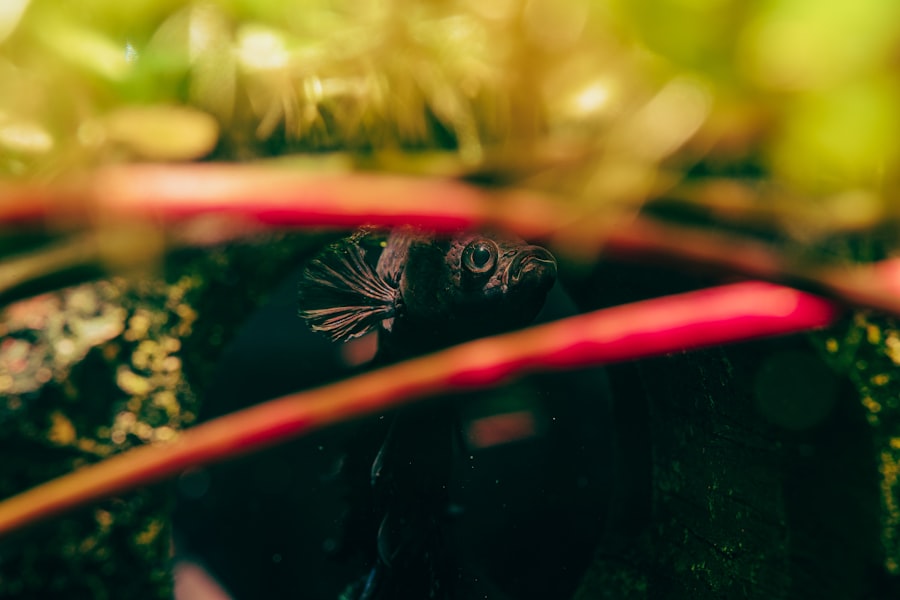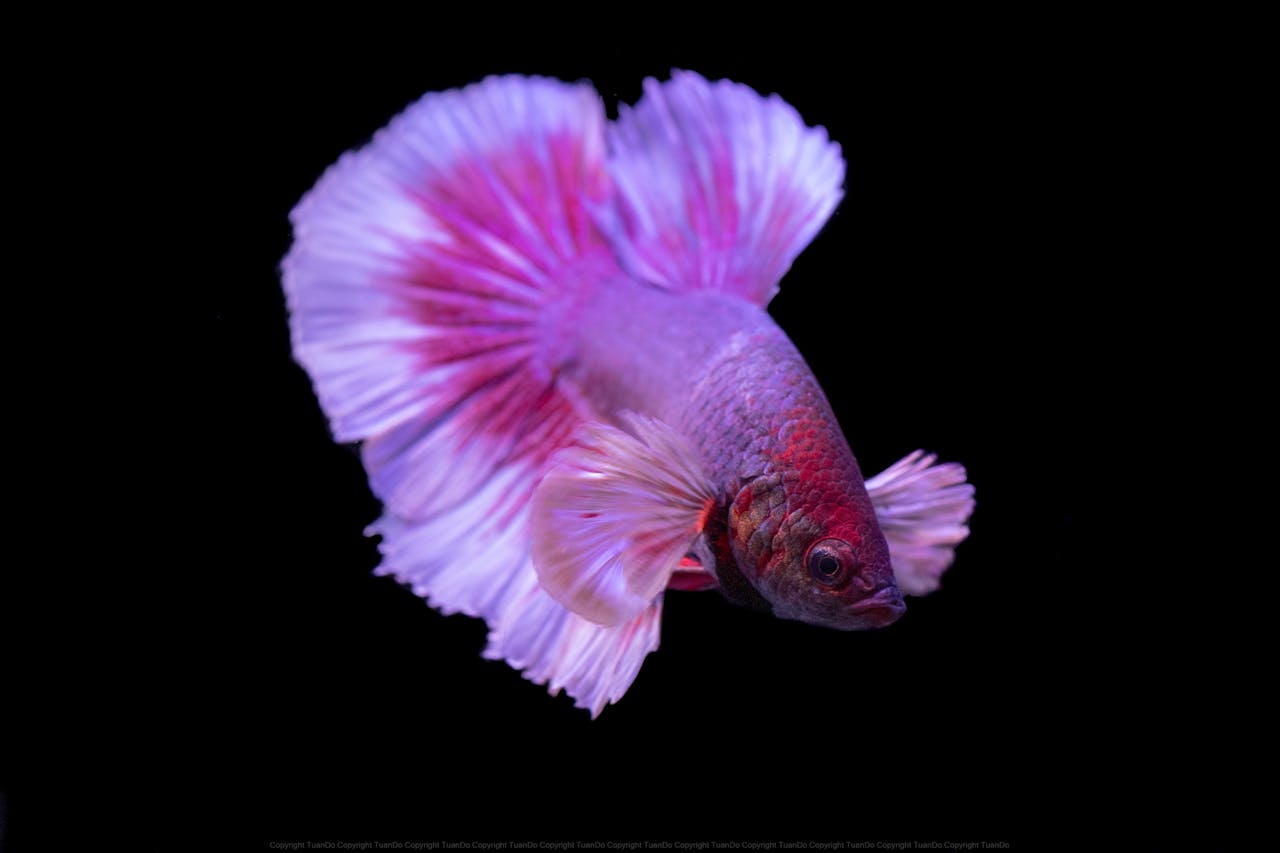When we delve into the world of Betta fish, we find ourselves surrounded by a rich tapestry of diversity. Betta fish, also known as Siamese fighting fish, belong to the family Osphronemidae and are native to Southeast Asia. They are renowned for their vibrant colors and flowing fins, but what many of us may not realize is that there are several distinct types of Betta fish, each with its own unique traits and characteristics.
Understanding these types is essential for any aquarist looking to keep these stunning creatures in their home aquarium. The primary classification of Betta fish can be divided into two main categories: the wild types and the domesticated varieties. Wild Betta fish are typically less colorful and have shorter fins compared to their domesticated counterparts.
They are often found in natural habitats such as rice paddies and shallow waters, where they exhibit more subdued colors that help them blend into their surroundings. On the other hand, domesticated Betta fish have been selectively bred for their vibrant colors and elaborate fin structures, resulting in a plethora of varieties that captivate fish enthusiasts around the globe. By understanding these classifications, we can better appreciate the beauty and complexity of Betta fish.
Key Takeaways
- Betta fish come in various types including plakat, halfmoon, and crowntail, each with unique fin shapes and sizes.
- Popular betta fish varieties include the traditional red, blue, and green colors, as well as the rare and exotic galaxy and koi patterns.
- Betta fish colors can range from solid to marble, and can change based on mood, health, and environment.
- Each betta fish type has its own unique characteristics, such as aggression levels, fin shapes, and swimming abilities.
- Care tips for different betta fish varieties include maintaining proper water temperature, providing a varied diet, and creating a suitable tank environment.
Popular Betta Fish Varieties
Crowntail Bettas: Unique Specimens
The Crowntail’s fins can vary in length and shape, making each individual a unique specimen. Their vibrant colors, ranging from deep blues to fiery reds, further enhance their appeal, making them a favorite among aquarists.
Halfmoon Bettas: Dramatic Displays
Another beloved variety is the Halfmoon Betta, which boasts a tail that spreads out to a full 180 degrees when fully flared. This dramatic display of fins creates an impressive visual effect that many find irresistible. Halfmoon Bettas come in a wide array of colors and patterns, allowing us to choose one that perfectly fits our aesthetic preferences.
Plakat Bettas: Traditional Charm
Additionally, we have the Plakat Betta, known for its short fins and robust body. This variety is often favored by those who appreciate a more traditional look, as it closely resembles the wild Betta fish while still showcasing vibrant colors. Each of these varieties brings its own charm to our aquariums, making it essential for us to consider our options carefully.
Differences in Betta Fish Colors

The color variations in Betta fish are nothing short of mesmerizing. As we observe these aquatic beauties, we notice that their colors can range from deep blues and greens to bright reds and yellows. The genetic makeup of each Betta fish plays a significant role in determining its coloration.
For instance, some Bettas exhibit solid colors, while others display intricate patterns such as marbling or butterfly designs. These patterns can change over time due to environmental factors or genetic mutations, adding an element of surprise to our Betta-keeping experience. Moreover, the interplay of light can dramatically affect how we perceive a Betta’s color.
Under different lighting conditions, a Betta’s scales may shimmer and shift hues, creating an ever-changing display that captivates our attention. The iridescence of certain colors can be particularly striking, making it essential for us to provide appropriate lighting in our aquariums to showcase our Bettas’ true beauty. Understanding these color differences not only enhances our appreciation for these fish but also helps us make informed decisions when selecting Bettas for our collections.
Unique Characteristics of Each Betta Fish Type
| Betta Fish Type | Color | Fin Type | Size |
|---|---|---|---|
| Veil Tail | Various | Long, droopy fins | Medium |
| Crowntail | Various | Fins have spiky appearance | Small to medium |
| Halfmoon | Various | Fins form a 180-degree spread | Medium |
| Double Tail | Various | Two distinct tails | Small to medium |
Each type of Betta fish possesses unique characteristics that set it apart from others. For instance, the Crowntail Betta’s distinctive fin structure is not just visually appealing; it also influences its swimming style. These Bettas tend to be more agile swimmers due to their shorter fin lengths compared to other varieties.
This agility can be beneficial in a community tank setting where they may need to navigate around other fish.
While their impressive fins make them stand out in any aquarium, they may require more care when it comes to water quality and tank mates.
Their long fins can be prone to damage if they come into contact with sharp objects or aggressive tank mates. Understanding these unique characteristics allows us to tailor our care routines and tank setups to meet the specific needs of each Betta variety.
Care Tips for Different Betta Fish Varieties
Caring for Betta fish requires a nuanced approach that takes into account the specific needs of each variety. For instance, Crowntail Bettas thrive in well-maintained tanks with plenty of hiding spots and plants to explore. They are generally hardy fish but can be sensitive to changes in water parameters.
Regular water changes and monitoring of ammonia levels are crucial for keeping them healthy. On the other hand, Halfmoon Bettas may require more attention due to their long fins. We should ensure that their tank environment is free from sharp decorations that could snag their delicate fins.
Additionally, providing a spacious tank with gentle filtration will help maintain water quality while allowing them to swim freely without resistance from strong currents. By tailoring our care routines to suit each variety’s needs, we can create a thriving environment for our beloved Bettas.
Breeding and Genetics of Betta Fish

Breeding Betta fish is an exciting endeavor that allows us to explore the fascinating world of genetics. When we breed Bettas, we have the opportunity to create new color patterns and fin types by carefully selecting parent fish with desirable traits. Understanding basic genetics is essential for successful breeding; for example, certain color genes are dominant while others are recessive, influencing the appearance of offspring.
Moreover, breeding practices can lead to the emergence of unique traits within specific lines of Bettas. For instance, selective breeding has resulted in the development of rare colorations such as “dragon scale” Bettas, which feature iridescent scales that shimmer like gemstones. However, responsible breeding practices are crucial to avoid health issues associated with inbreeding.
By prioritizing genetic diversity and health in our breeding programs, we can contribute positively to the Betta community while enjoying the thrill of creating new varieties.
Choosing the Right Betta Fish Type for Your Aquarium
When it comes to selecting the right Betta fish type for our aquarium, several factors come into play. First and foremost, we must consider the size of our tank and its inhabitants. Some varieties, like the Plakat Betta, are more adaptable to community tanks due to their robust nature and shorter fins.
In contrast, more delicate varieties like the Halfmoon may fare better in species-specific tanks where they can thrive without competition or aggression from other fish.
Do we prefer vibrant colors or unique fin structures?
Are we drawn to specific patterns or traits? By taking the time to research different types of Bettas and their compatibility with our existing setups, we can ensure that we choose a variety that not only fits our aesthetic desires but also thrives in our care.
Rare and Exotic Betta Fish Varieties
As we venture deeper into the realm of Betta fish, we discover a world filled with rare and exotic varieties that capture our imagination. One such example is the Koi Betta, which features a stunning blend of colors reminiscent of traditional Koi fish patterns. These Bettas are highly sought after due to their unique appearance and limited availability in the market.
Another exotic variety is the Marble Betta, known for its ever-changing color patterns that can shift dramatically over time. This unpredictability adds an element of excitement for those who appreciate the beauty of nature’s artistry. While these rare varieties may come with a higher price tag, they offer an unparalleled experience for aquarists willing to invest in their beauty and uniqueness.
In conclusion, exploring the world of Betta fish reveals a captivating array of types, colors, and characteristics that enrich our aquarium experiences. By understanding these aspects and providing proper care tailored to each variety’s needs, we can create thriving environments for our aquatic companions while enjoying the beauty they bring into our lives. Whether we are drawn to popular varieties or rare gems, our journey with Betta fish promises endless fascination and joy.
If you are interested in learning more about different types of betta fish, you should check out the article here. This article provides detailed information on the various types of betta fish available and how to care for them properly. It is a great resource for anyone looking to add a betta fish to their aquarium.


